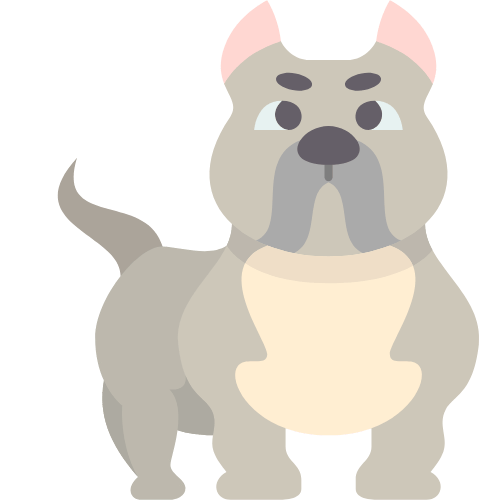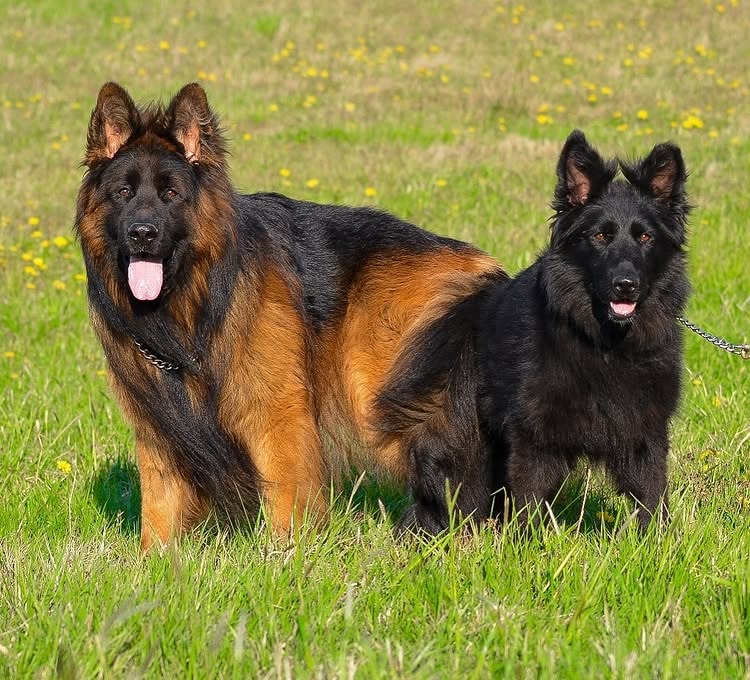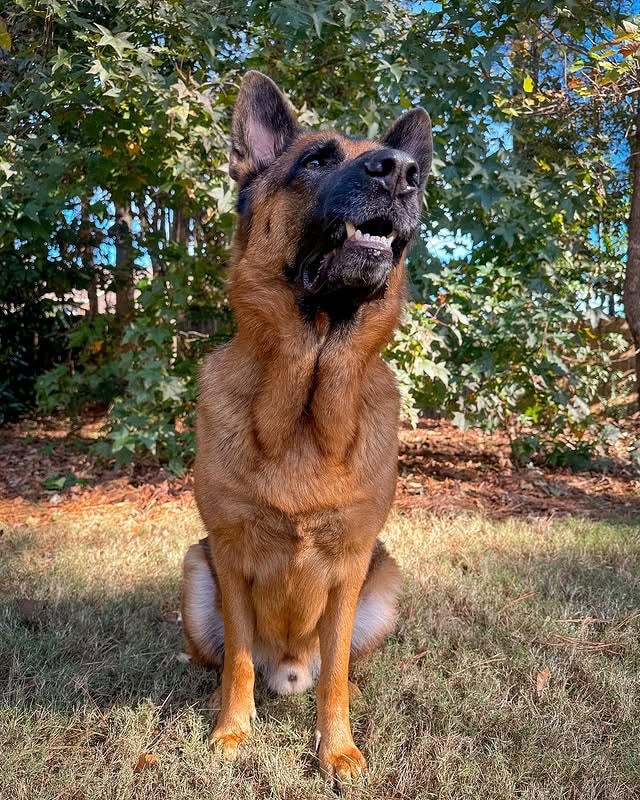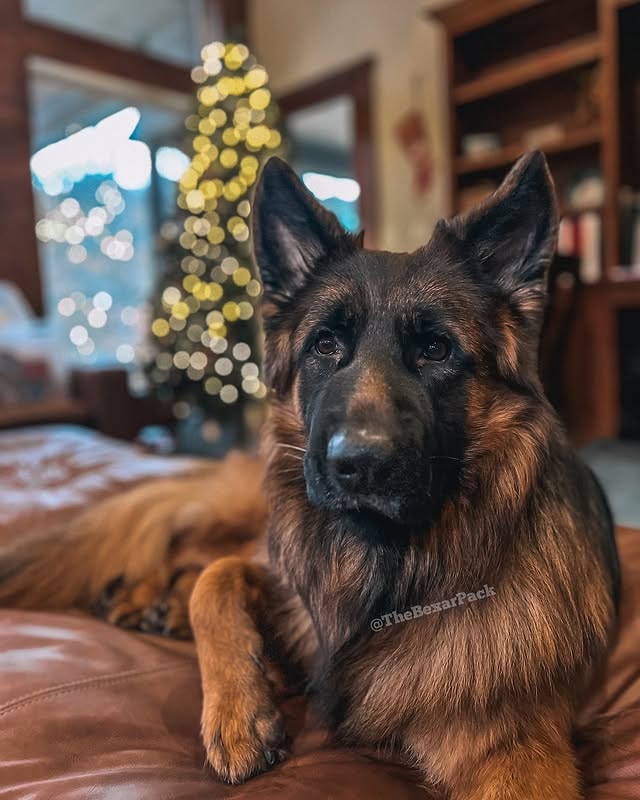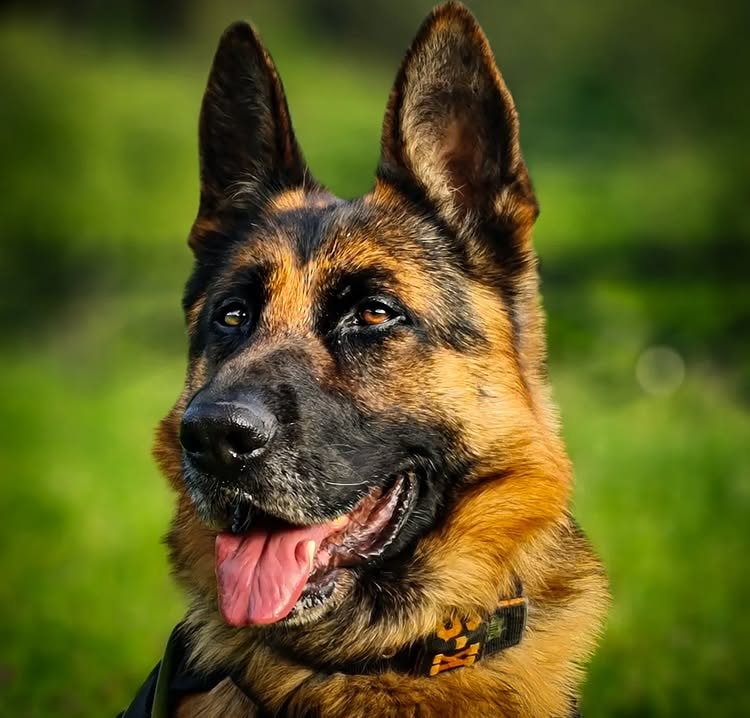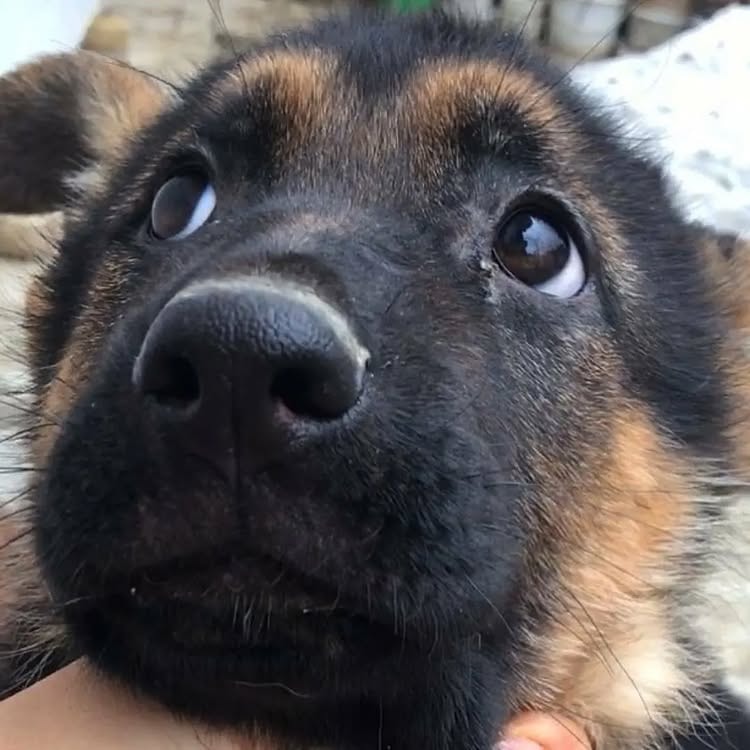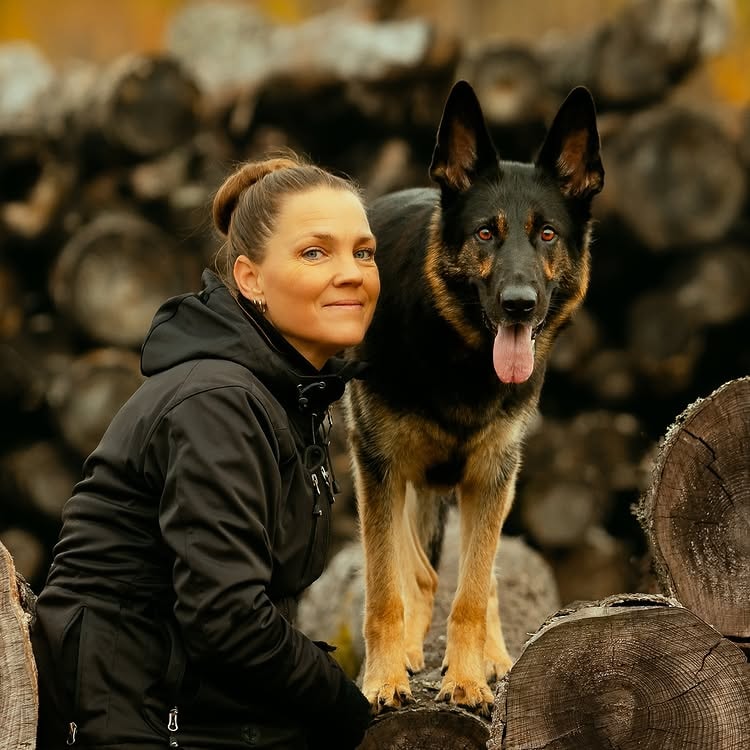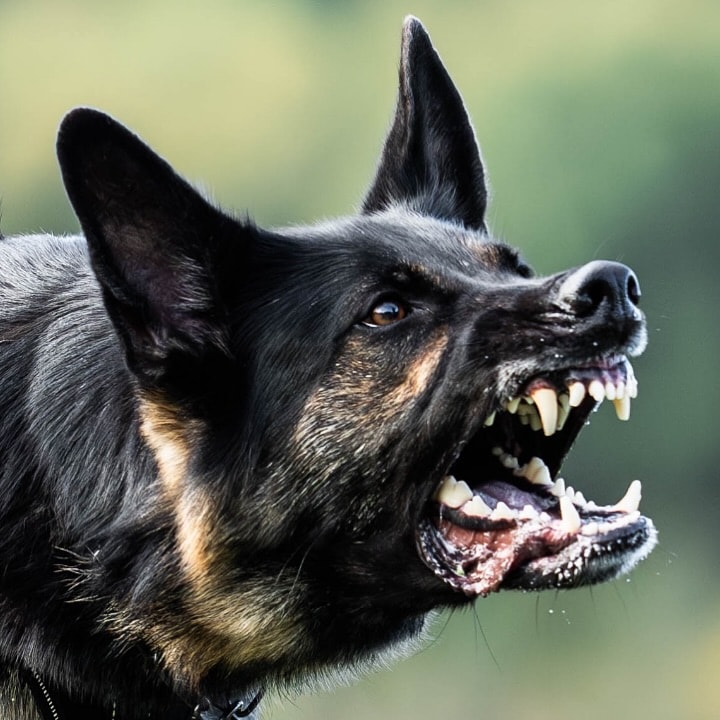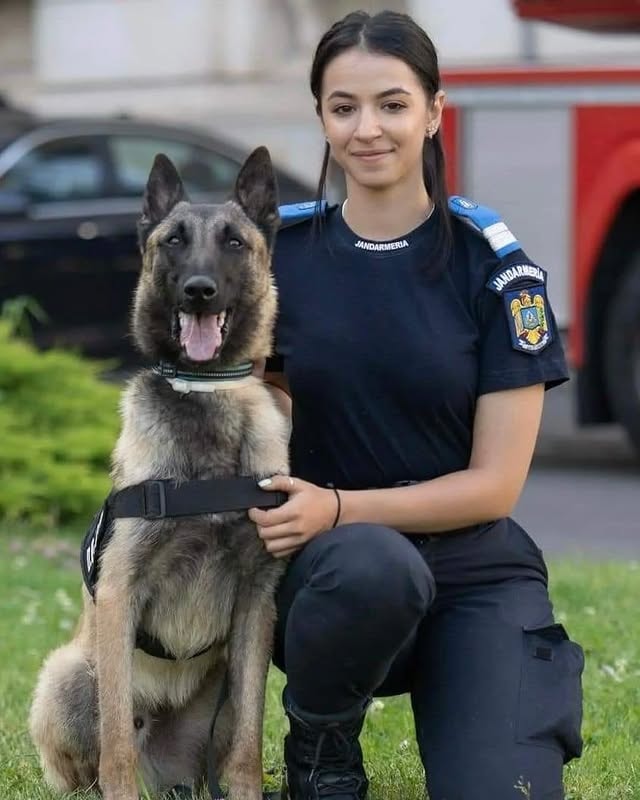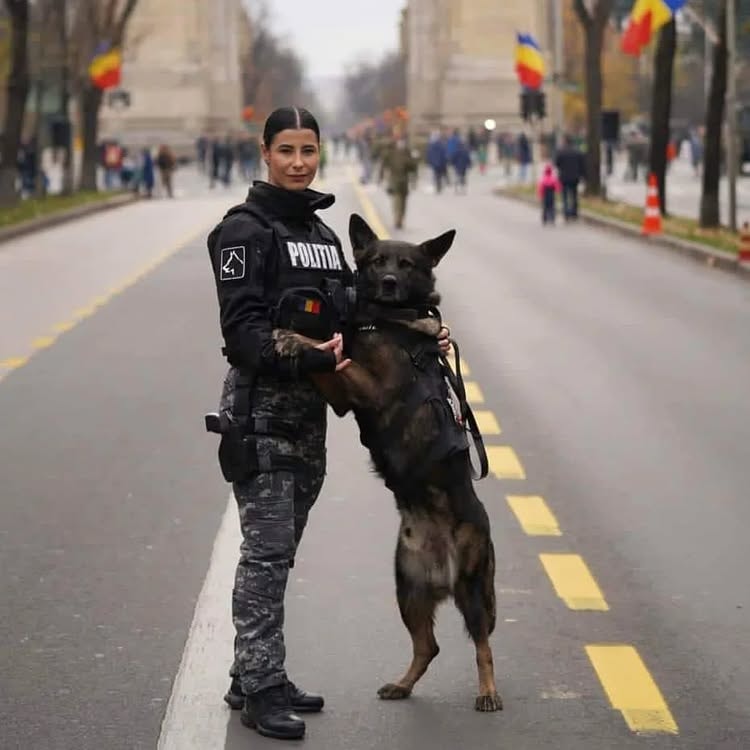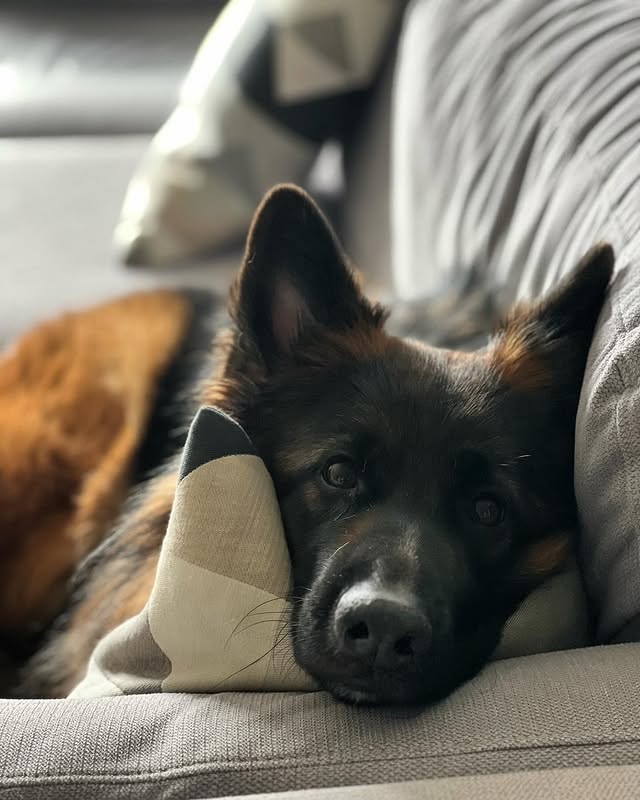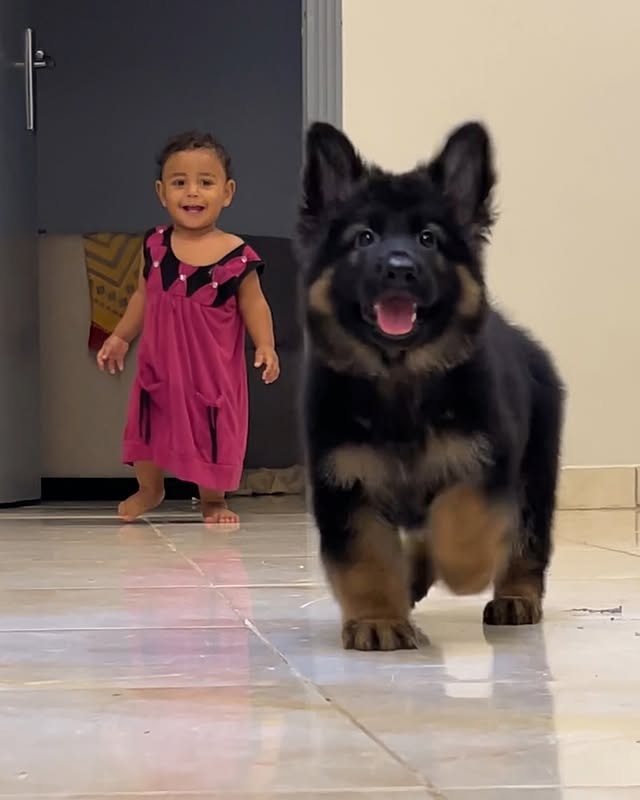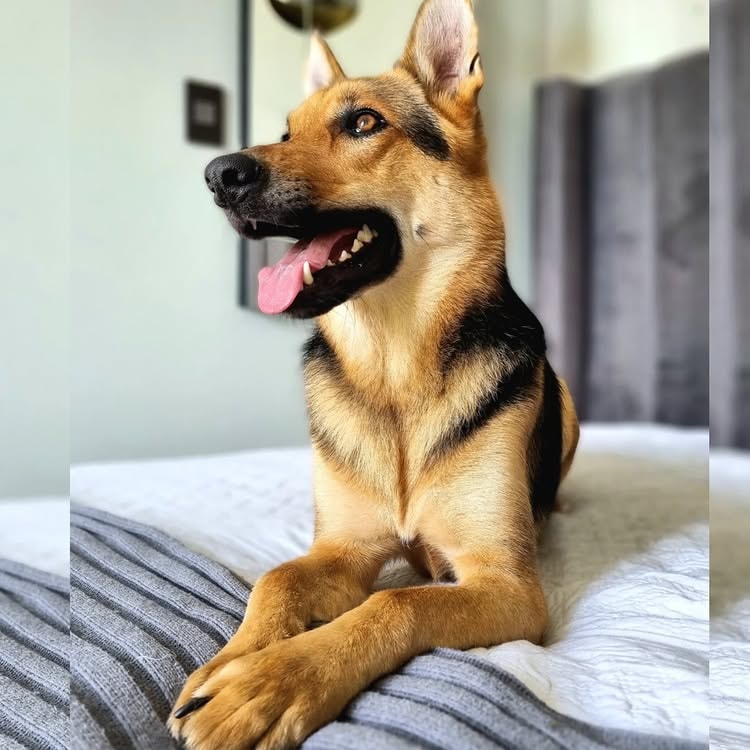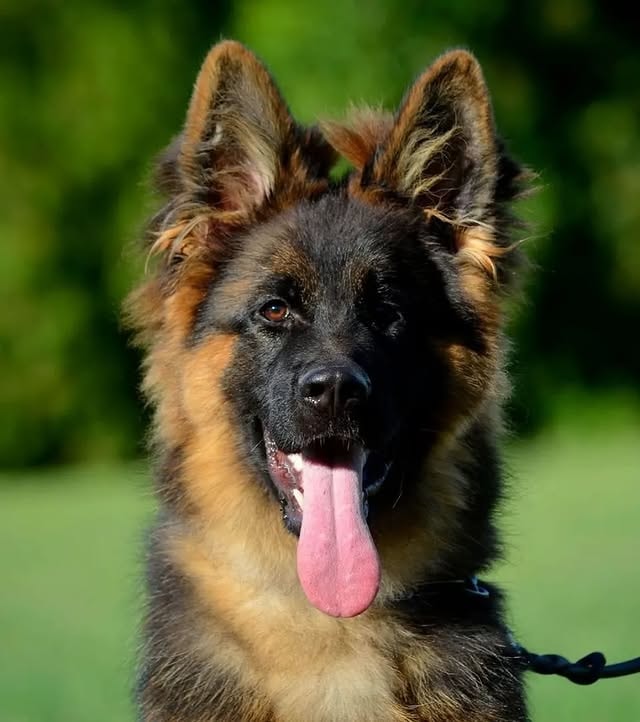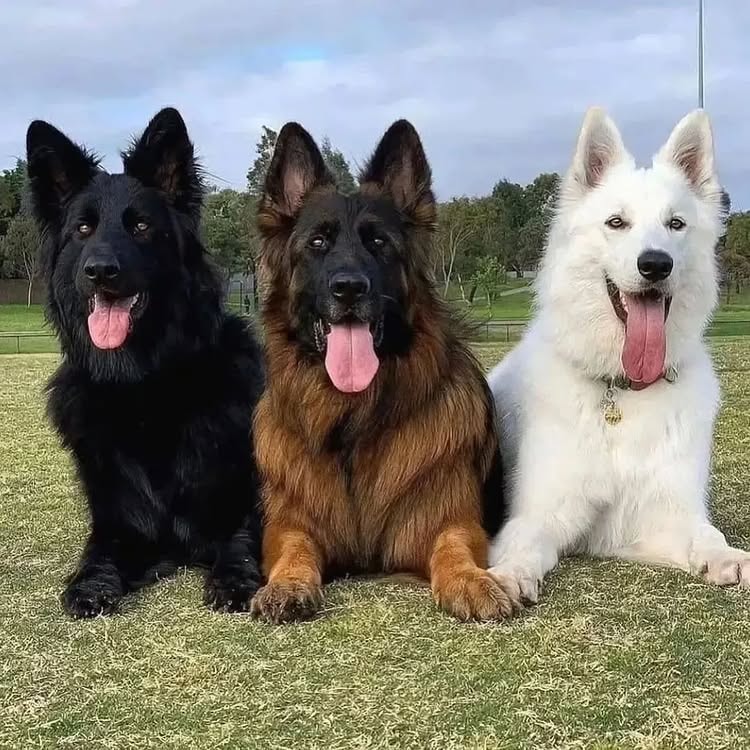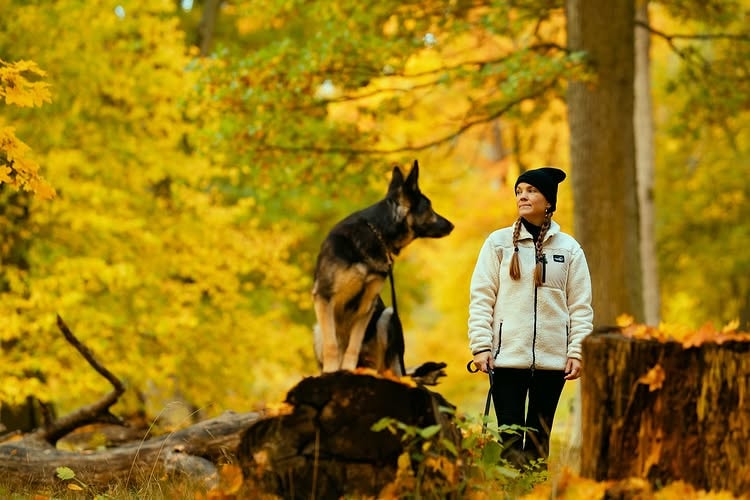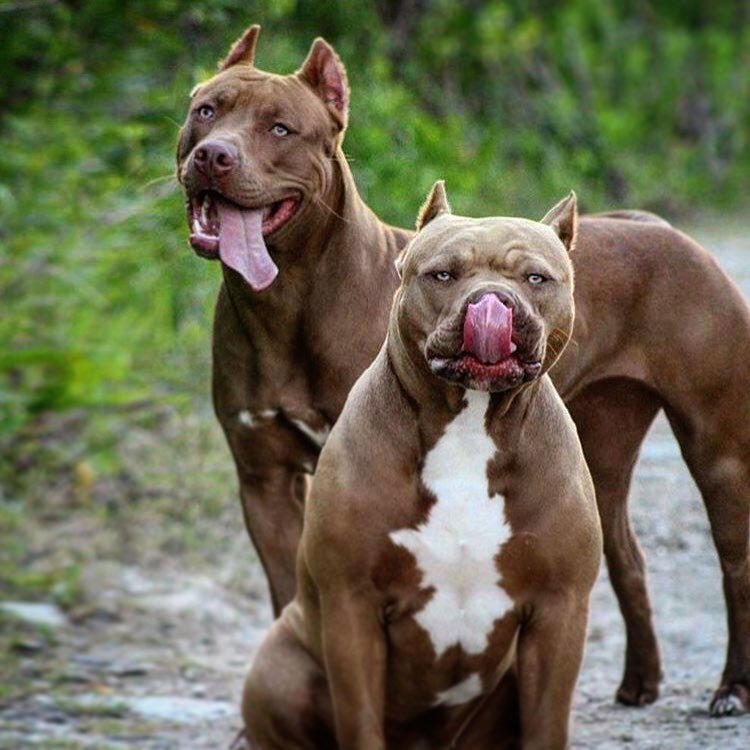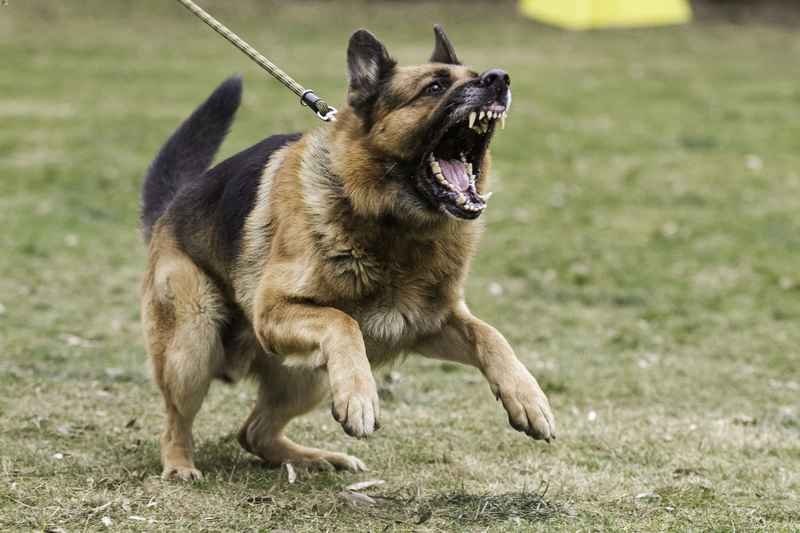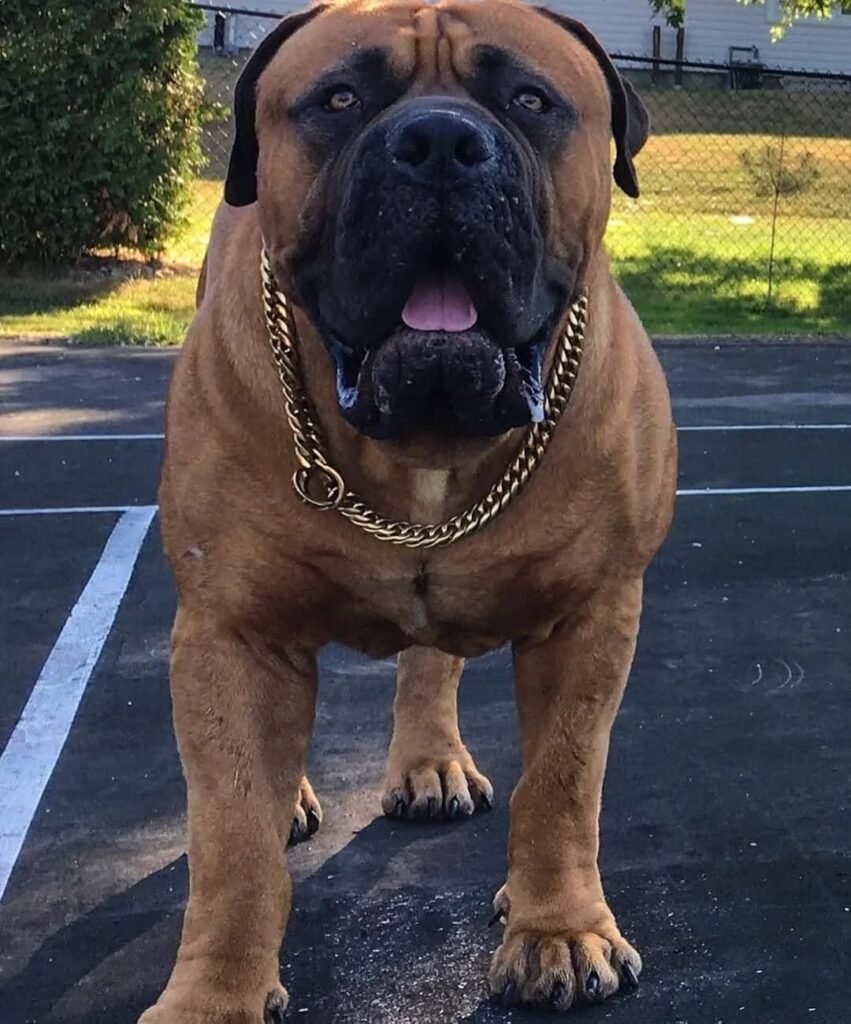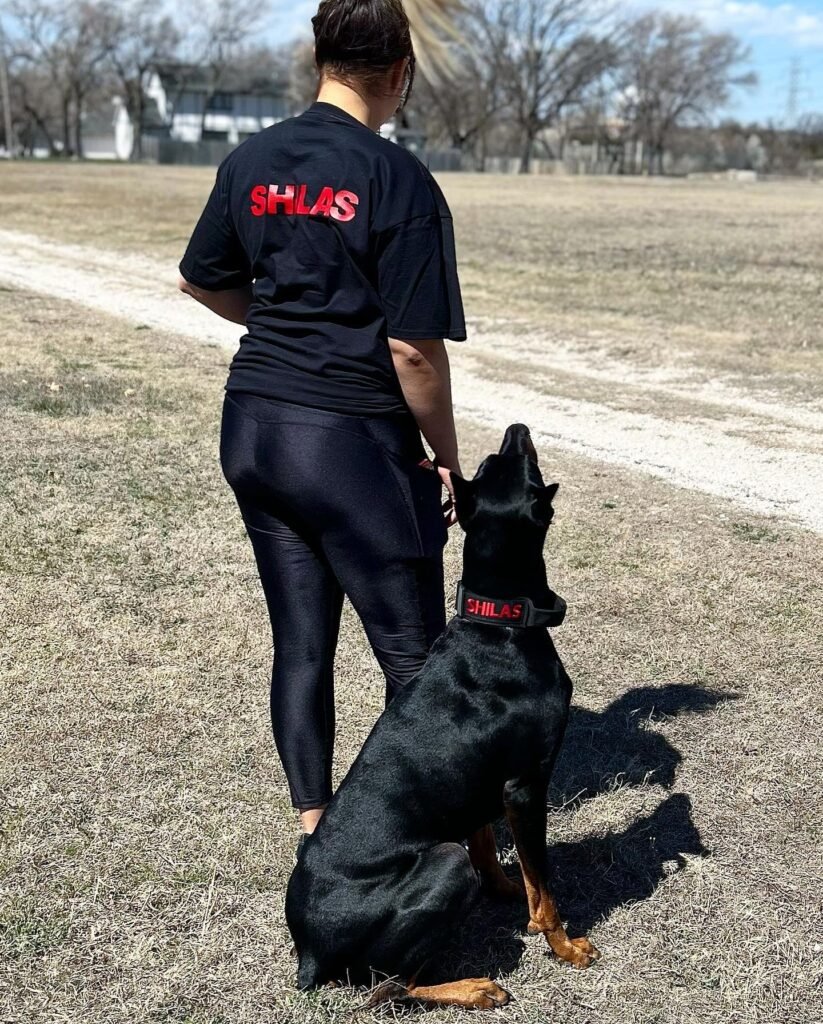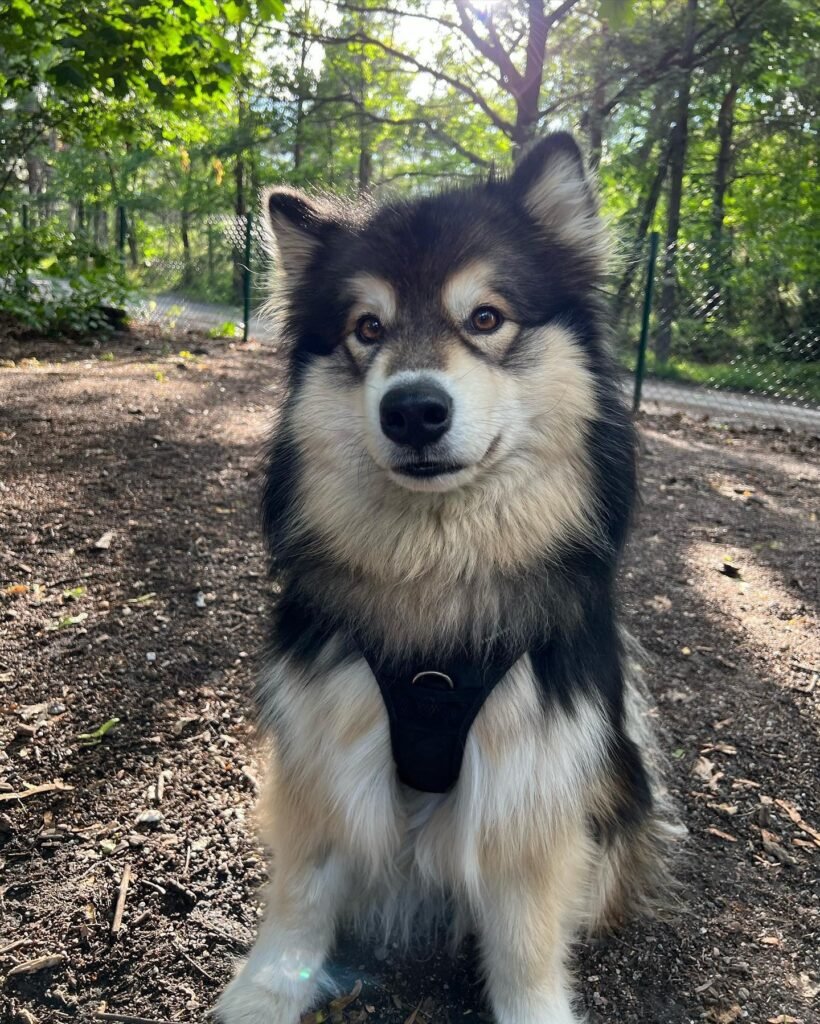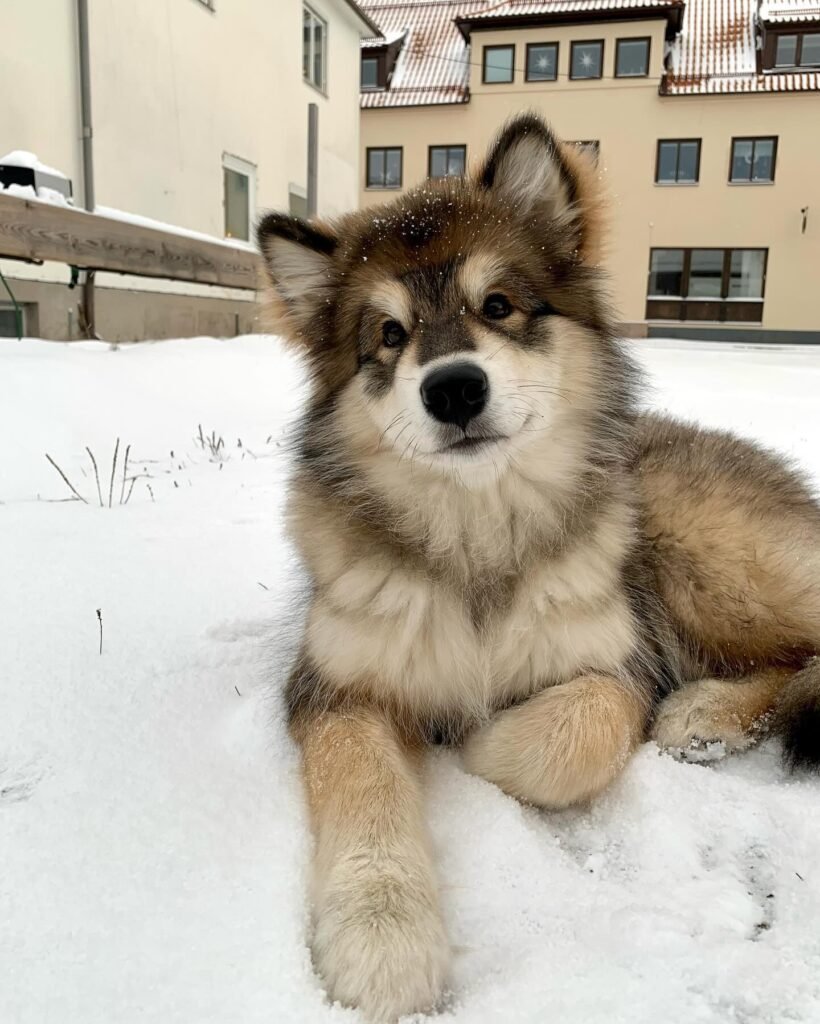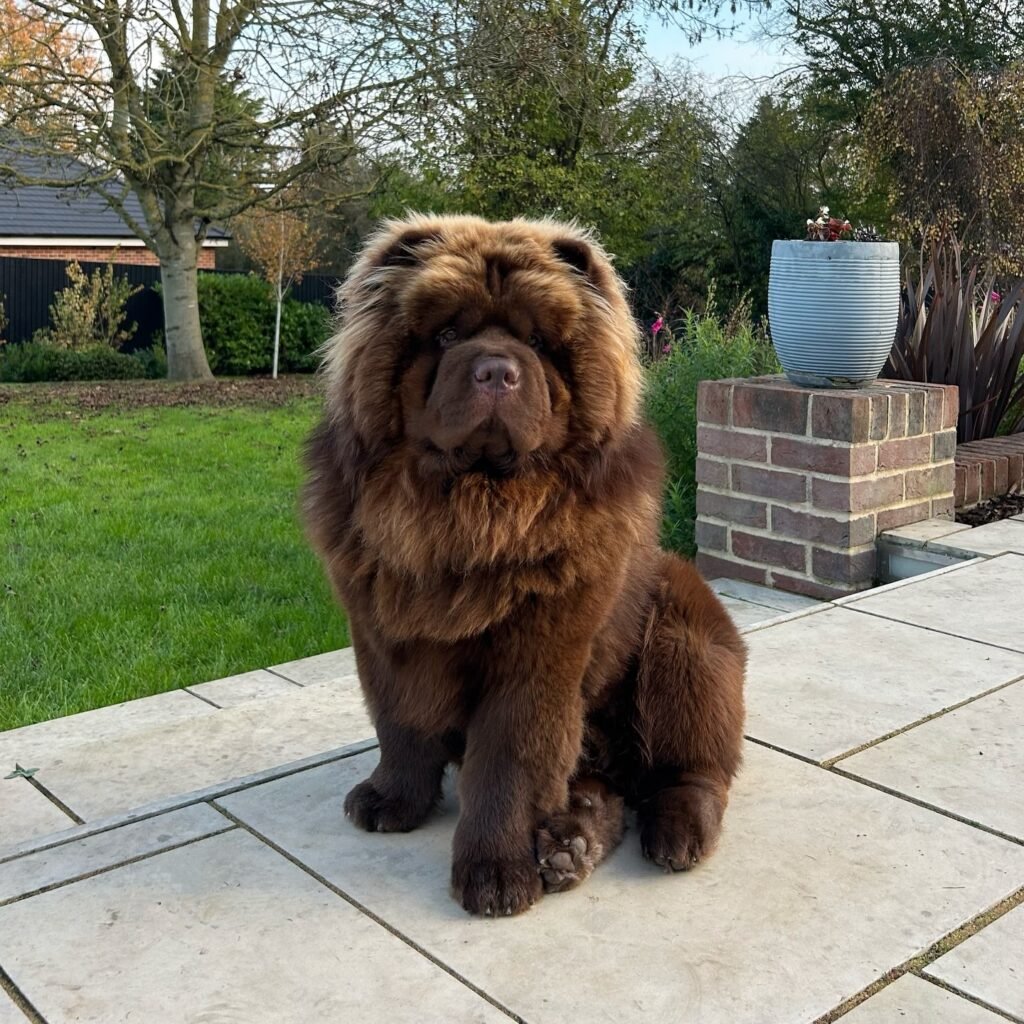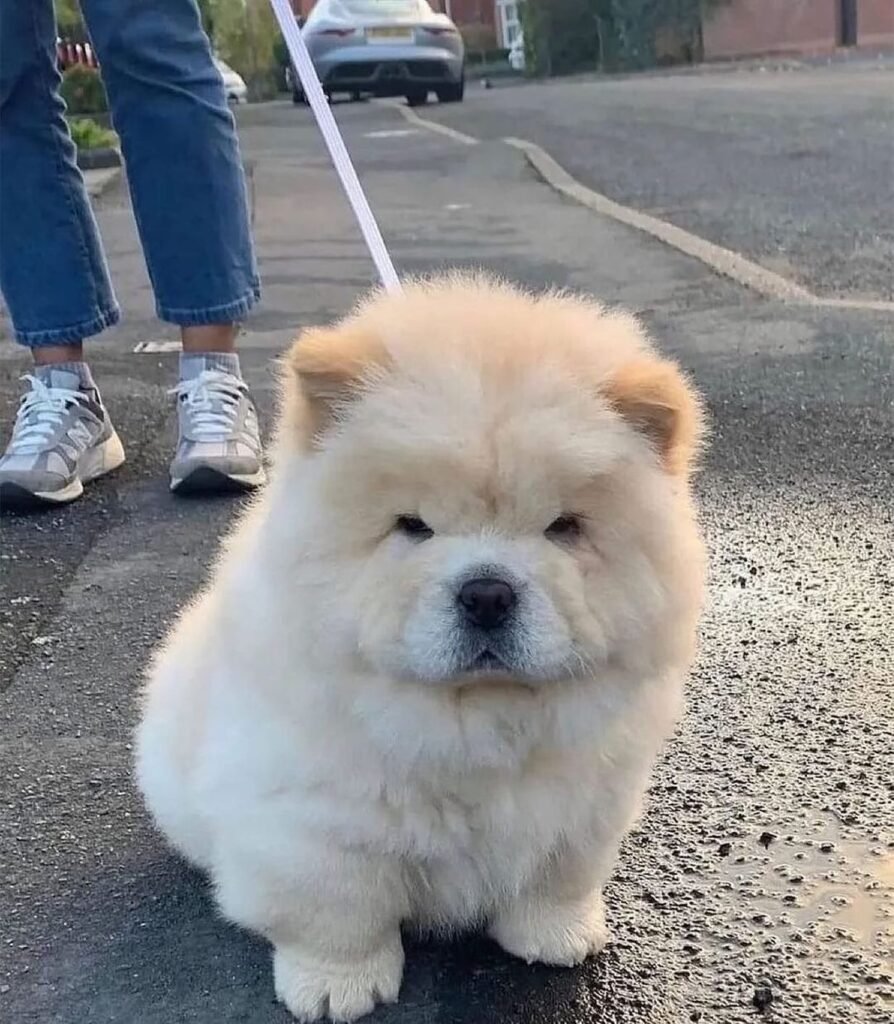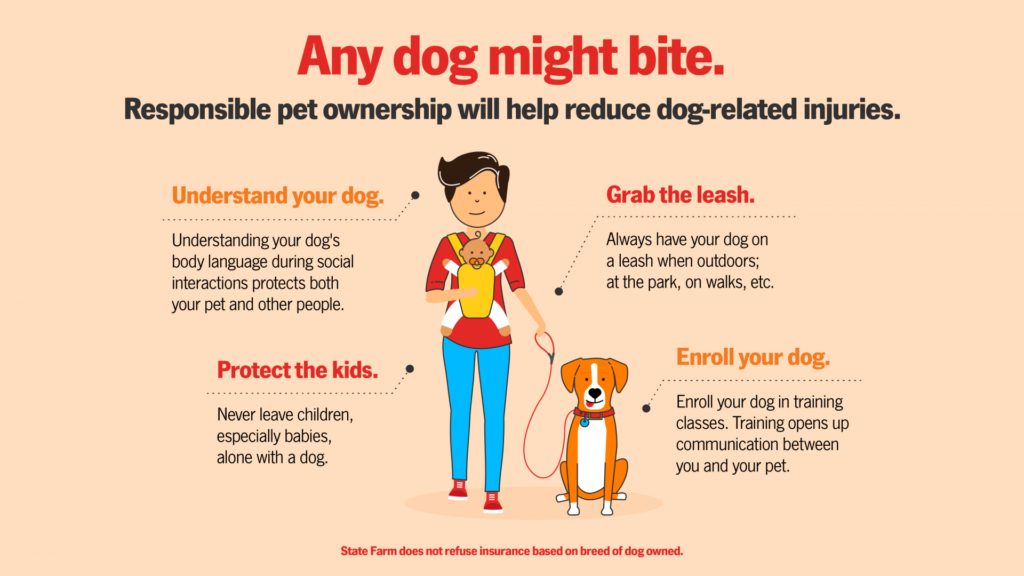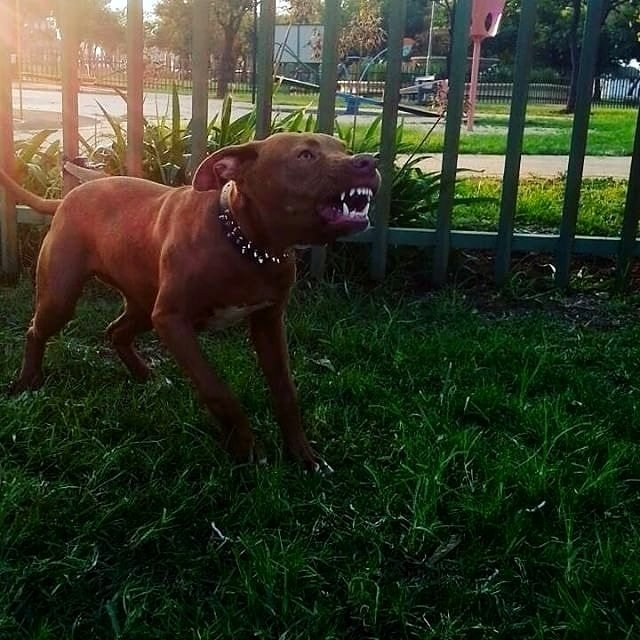
Dogs hold a special place in many families, providing companionship, security, and emotional support. However, several dangerous dog breeds can pose significant risks if not managed responsibly. It is important to recognize that a dog’s behavior depends on more than just breed alone. Factors such as training and socialization, environment, genetics, and the approach of dog owners all play crucial roles in how a dog breed interacts with people and other animals. Let’s examine the most dangerous dog breeds, explore reasons behind aggressive behavior, and offer insights into responsible pet ownership. We will also touch on aspects of dog bite statistics, the realities of fatal dog attacks, and what pet parents can do to prevent injuries.
When discussing dangerous dogs, it is essential to consider nuance. Even larger dogs that are considered among the most dangerous breeds can be transformed into calm companions with proper training and early training and socialization. Unfortunately, the media often focuses on pit bull attacks and incidents involving aggressive dog behavior without showing the bigger picture. In some jurisdictions, breed specific legislation has been enacted to restrict or ban ownership of certain breeds, reflecting growing concerns about safety. Yet, experts stress that inexperienced owners who neglect to provide properly trained and well-socialized environments for their pets often contribute to the problem.
Understanding The Roots of Canine Aggression
Canine aggression typically stems from genetics, poor training and socialization, fear, or a territorial streak. Breeds that were originally bred for guard dogs, hunting, or fighting dog purposes sometimes have a greater likelihood of aggressive behavior, though this is not a universal rule. Each dog breed retains a unique disposition shaped by its lineage, environment, and how its pet owners manage it from a young age.
Pit bulls, for example, have historically been associated with dog fighting, leading some to believe they are inherently dangerous. On the contrary, many pit bulls thrive as loyal family pets when given proper outlets for energy and training and socialization. However, irresponsible breeding and ownership can amplify negative tendencies, resulting in pit bull attacks. Similar points apply to the doberman pinscher, german shepherd, and others frequently labeled as high risk dog breed or “aggressive dog.” With thorough socialization, structure, and proper training, even these dogs can form gentle bonds with humans and other pets.
Types of Aggression
Some dogs develop strong attachments to their property, living space, or family. When a perceived intruder or threat enters their territory, they may resort to aggressive behavior. This can happen in the home, yard, or even while out on walks. Typically, territorial aggression surfaces when a dog feels it must defend what it considers its own domain. Pet owners should address this issue by setting consistent boundaries, introducing newcomers in a calm, controlled manner, and ensuring the dog knows it can rely on its owner for security, rather than having to protect everything on its own.
Fear aggression occurs when canines feel cornered, threatened, or overwhelmed. If a dog has not been properly socialized or has had negative experiences, it may lash out when scared. Giving dogs gradual exposure to new situations at a young age can help curb this problem. Gentle introductions, positive reinforcement, and a nurturing environment all contribute to reducing fear-based reactions. If a dog exhibits signs of fear aggression, consulting a professional trainer or behaviorist can help identify triggers and establish a desensitization program.
Many dog breeds have been historically prized for their protective nature. These breeds may instinctively resort to aggression if they perceive that their family members or households are in danger. While this trait can be valuable in a well-managed setting—indeed, many owners seek these breeds out as guard dogs—it can become problematic if the dog is not taught how to differentiate between genuine threats and everyday interactions. Controlled socialization, clarity in training, and consistent discipline help channel a protective dog’s instincts constructively rather than allowing them to cause harm.
Certain breeds, particularly those originally bred for chasing or capturing prey (like some sled dogs or hunting dogs), may exhibit a heightened prey drive, also termed as predatory aggression otherwise. This can include lunging at smaller animals, stray cats, or even small children if the dog confuses them with prey. Owners of dogs with strong prey drives should remain cautious, provide extensive socialization, and supervise their pets in environments where children or other animals are present. Proper training focused on impulse control and redirection is essential to ensure these dogs can live harmoniously with humans and other pets.
Mitigating Aggression Through Training and Socialization
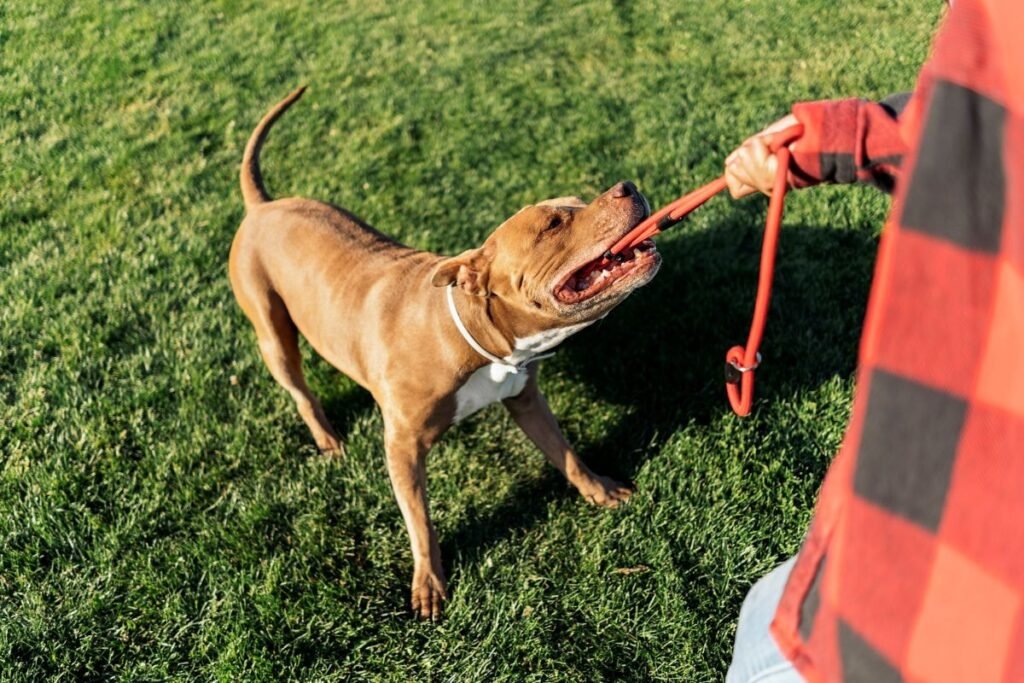
Regardless of the root cause, aggression can often be minimized with the right approach. Providing proper training from the beginning, remaining consistent with discipline, and understanding each dog’s breed-specific tendencies are crucial steps. Every dog is an individual, and breeds labeled as “aggressive” or “mixed breeds” with uncertain temperaments can still become loving, well-adjusted companions if their owners invest in early intervention and continuous guidance. Recognizing warning signs, such as growling or stiff posture, and addressing them promptly can prevent aggression from escalating.
The Top 10 Most Dangerous Dog Breeds
Below we discuss ten dangerous dog breeds that have garnered attention due to fatal dog attacks, strong territorial instincts, or a history of aggression. Please note that each dog breed included can be a great companion if you commit to training and socialization and handle them with respect and care.
1. Pit Bulls – A High-Risk Breed
Pit bulls frequently top the list of dangerous breeds in public perception because of their muscular build, strong bite, and history of being used as a fighting dog. In fact, the name “pit bulls” often encompasses several closely related types, including the American Pit Bull Terrier and pit bull terriers.
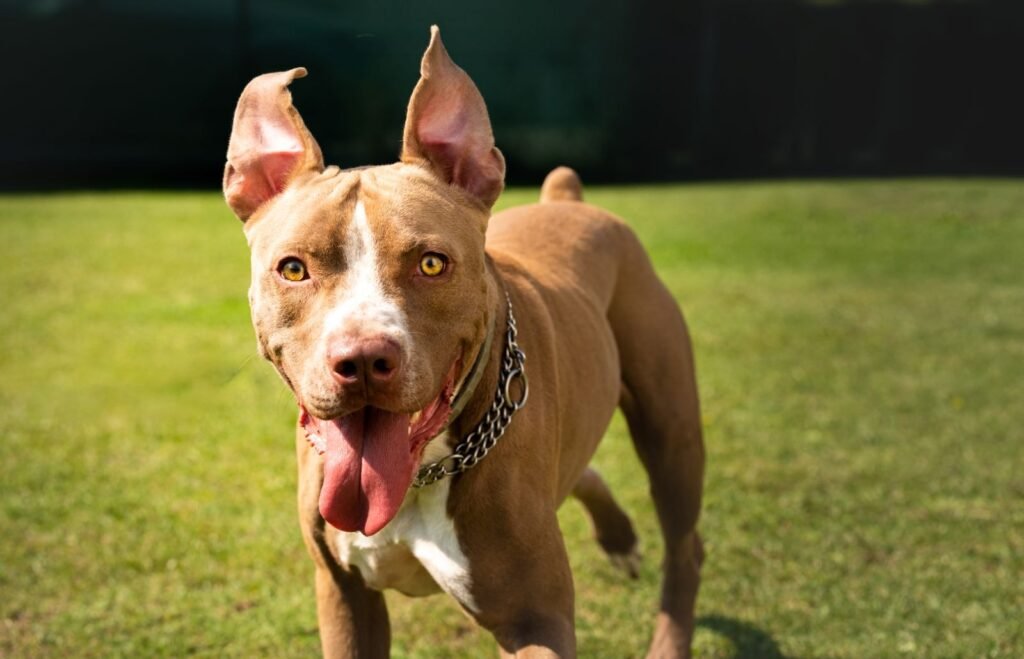
Originally bred for bull-baiting and later dog fighting, pit bulls acquired a reputation for tenacity and power. Over time, some people exploited these characteristics, leading to irresponsible breeding practices. This history is a primary reason pit bulls are often a focal point in breed-specific legislation.
Despite negative stereotypes, many pit bulls exhibit intelligence, energy, and loyalty. They can flourish in a structured environment with an owner who is experienced, patient, and committed to proper training. By providing outlets for their energy—through regular walks, play sessions, and mental challenges—owners can stave off unwanted behaviors.
Pit bulls possess a significant psi bite force, which becomes especially concerning if they become an aggressive dog. Incidents involving untrained or neglected pit bulls have fueled widespread alarm. While their physical attributes are formidable, keep in mind that human direction, socialization, and responsible pet ownership play pivotal roles in how these dogs behave.
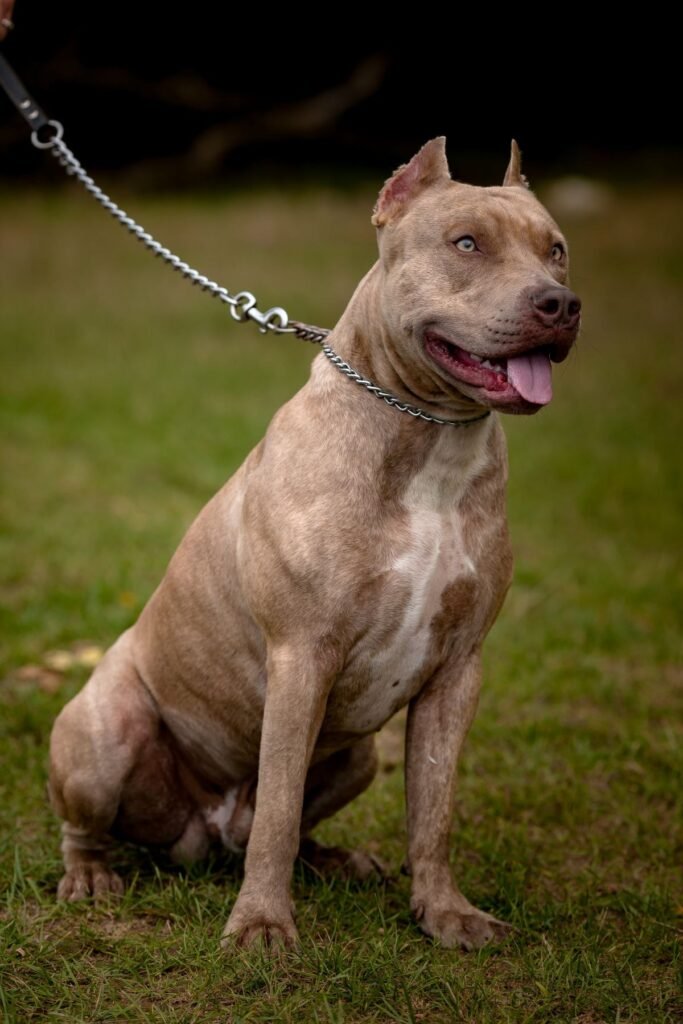
Early socialization and consistent boundaries give pit bulls an opportunity to shine as loving pets. Training rooted in positive reinforcement, rather than punishment, helps them develop confidence without hostility. Given the controversies and legal restrictions they sometimes face, owners who are dedicated to providing proper training can demonstrate how pit bulls, when raised responsibly, do not pose a danger to the community.
2. Rottweilers – Powerful and Confident
Rottweilers are another breed regarded as high-risk due to their size, strength, and protective instincts. Originating in Germany, these working dogs excelled in tasks such as herding and pulling carts laden with provisions.
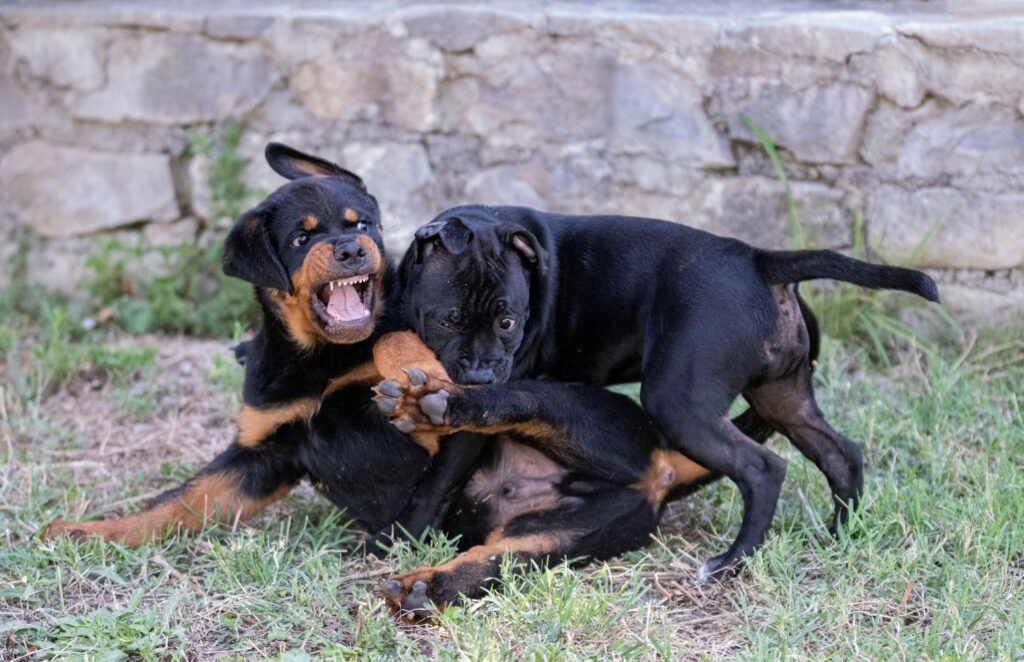
Rottweilers have a robust frame, broad chests, and powerful jaws. Combined with their intimidating appearance, these traits contribute to their reputation as a breed capable of serious harm if untrained or provoked.
One of the breed’s more valued traits is its unwavering loyalty and strong protective instincts, often making Rottweilers excellent guard dogs. However, the same instinct can become dangerous if the dog is not taught how to differentiate between everyday occurrences and legitimate threats. Early and continuous socialization, along with firm leadership, is crucial to ensure they develop a balanced outlook.
With a significant psi bite force, Rottweilers can cause severe injury. Incidents of dog attacks involving Rottweilers often garner public attention, further solidifying their portrayal as a dangerous dog. That said, research consistently shows that responsible ownership and proper training greatly reduce these risk factors.
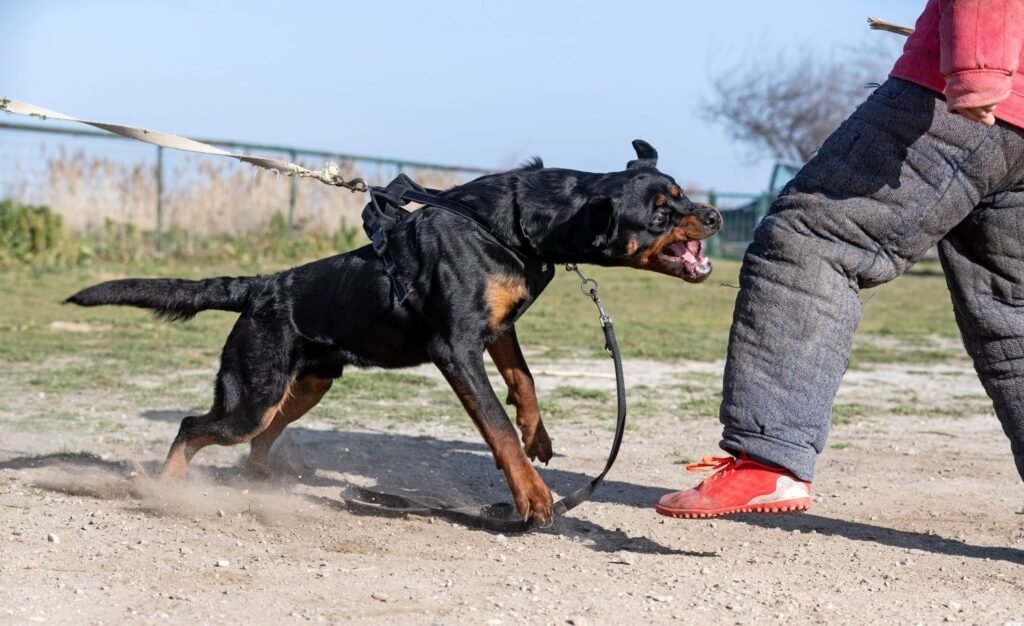
Structured obedience sessions, introduced from a young age, can foster good habits. Interaction with other dogs and humans helps Rottweilers gain confidence and learn acceptable behaviors. Providing them with both mental stimulation (like puzzle toys) and physical exercise keeps them from becoming bored or defensive.
3. German Shepherds – Intelligent and Loyal
German Shepherds are often singled out among dangerous dog breeds for their formidable intelligence, agility, and intense loyalty. As police dogs, search-and-rescue helpers, and trusted family protectors, German Shepherds demonstrate diverse abilities but also require diligent handling.
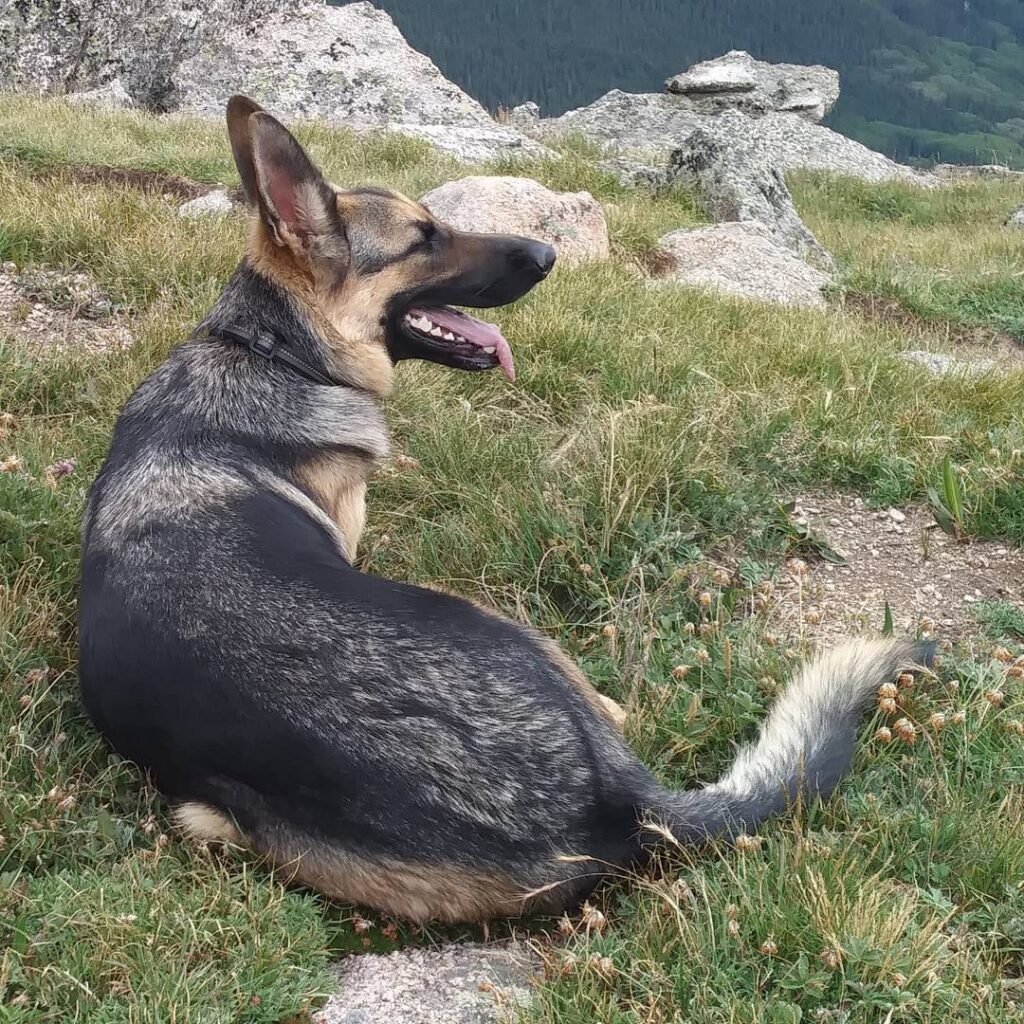
Initially bred for herding sheep, the German Shepherd gained worldwide recognition for its intelligence and trainability. Eventually, this breed found significant roles in law enforcement, military work, and as service dogs for individuals with disabilities.
When adequately socialized, German Shepherds can be affectionate and well-mannered around children, other pets, and strangers. However, their high energy and need for mental engagement means they can develop destructive or aggressive behavior if these requirements are unmet.
Possessing a notable protective drive, a German Shepherd may become territorial or resort to aggression if it perceives danger. Without proper training and socialization, this behavior can escalate, leading to serious dog bites.
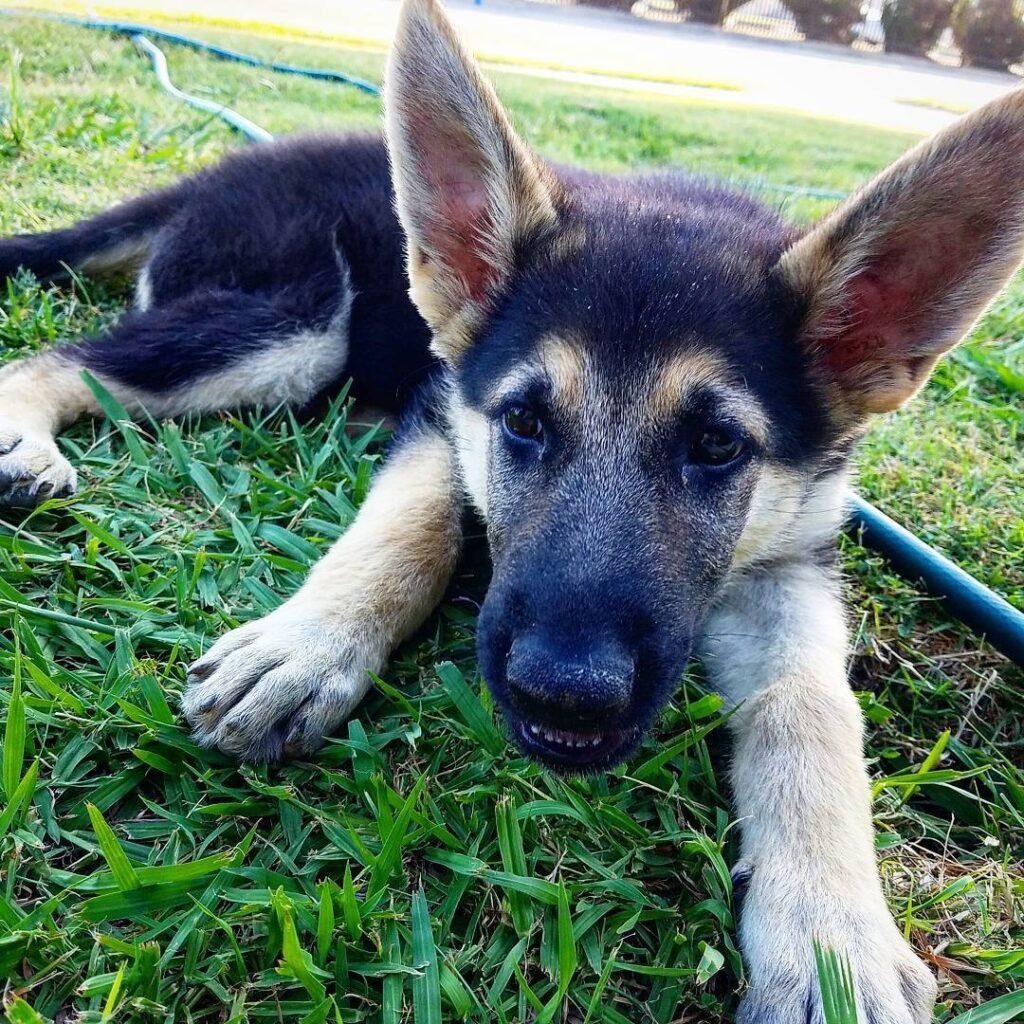
Structured routines, consistent leadership, and early training opportunities help German Shepherds adapt successfully. Activities like obedience trials, agility courses, and advanced tasks keep them mentally stimulated, reducing the likelihood of behavioral issues.
4. American Bulldog – Strong and Muscular
The American Bulldog is a robust dog breed characterized by its strength, determination, and self-assured presence. Although sometimes mistaken for pit bulls, American Bulldogs have their own distinct lineage and traits.
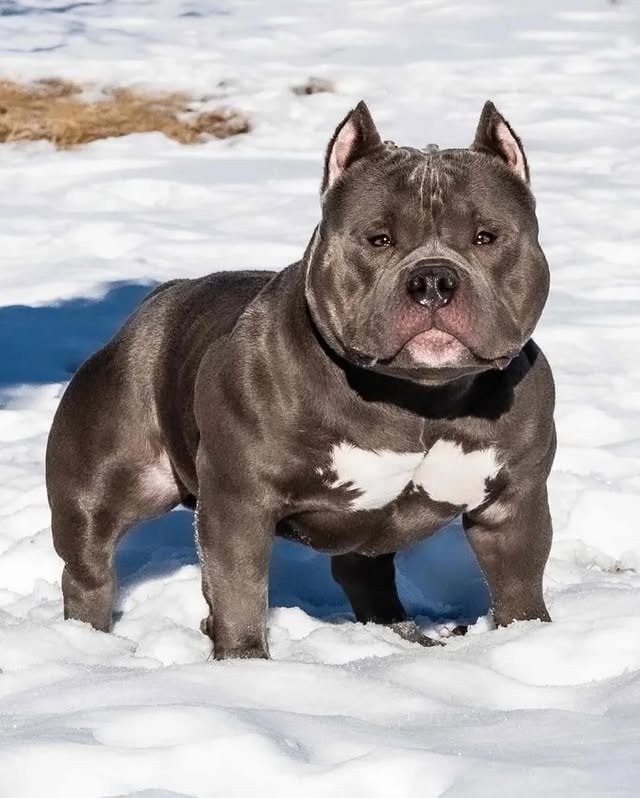
Evolving from the Old English Bulldog, American Bulldogs historically participated in farm work, often acting as guardians for livestock. Their sturdy build and keen senses made them adept at various rural tasks.
Confident, loyal, and occasionally territorial, American Bulldogs can be wonderful family dogs but might be suspicious of strangers. They tend to form strong attachments with their owners, which can manifest as protectiveness.
Like any large or powerful dog, an American Bulldog lacking proper training may misinterpret certain situations, seeing them as threats. Consequently, they may become aggressive or overly territorial.
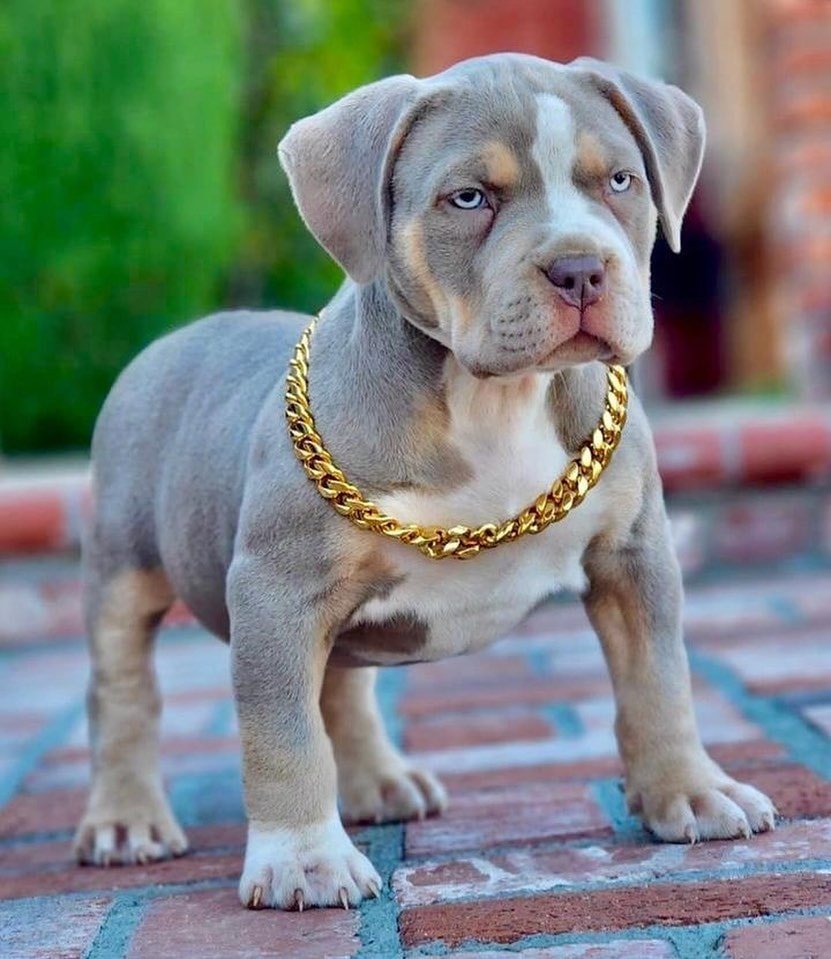
A structured routine, covering everything from meal times to exercise, helps establish boundaries. Early socialization classes, puppy obedience training, and consistent reinforcement of good behavior are vital. Owners who actively guide and engage their American Bulldog typically enjoy a harmonious bond with a well-adjusted pet.
5. Bullmastiff – Large and Powerful
Bullmastiffs, originally bred to deter poachers on expansive estates, are impressive both in size and demeanor. They combine the genetics of Bulldogs and Mastiffs, resulting in a potent blend of power and loyalty.
A Bullmastiff’s size can be intimidating, with many weighing over 100 pounds. Their physical presence, squared head, and muscular form naturally command respect.
Despite their imposing looks, many Bullmastiffs are affectionate and calm with their families. However, they remain reserved around strangers, as they were historically trained to intercept intruders without causing undue harm.
Improper management, insufficient exercise, or lack of social exposure can lead to aggressive dog tendencies. Because of their mass and physical strength, even minor displays of aggression can be problematic if left unchecked.
Balance is the watchword for Bullmastiffs. They need both mental stimulation—such as puzzle feeders—and moderate physical exercise tailored to their stamina. Beyond formal obedience, consistent daily interactions that reinforce trust and boundaries can keep them well-behaved.
6. Siberian Huskies – High-Energy and Independent
Many enthusiasts might be surprised to see the Siberian Husky on a list of the most dangerous dog breeds. Yet, their high energy, independence, and strong prey drive can spark behavioral issues if owners are not prepared.
Developed by the Chukchi people for sled-pulling and survival in subzero environments, the Siberian Husky excelled at transporting goods and living alongside humans in harsh conditions. This heritage endowed them with both stamina and resourcefulness.
Siberian Huskies are often friendly and sociable, but they demand ample exercise and mental engagement. If these needs are not met, destructive behaviors—ranging from chewing household items to escaping yards—can surface. They may also show aggression toward smaller animals if their prey drive is triggered.
An under-exercised or under-stimulated Siberian Husky might channel its frustration into aggression or resource guarding. Given their innate adaptability and quickness, controlling negative behaviors can be challenging for novice owners.
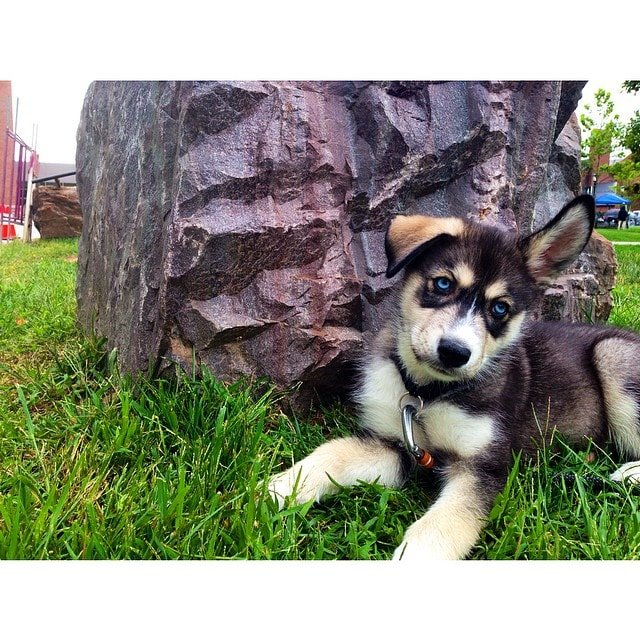
Establish daily exercise routines that include long walks, runs, or active play sessions. Engaging them in obedience or agility training helps tap into their intelligence while providing necessary outlets for their energy. Early introduction to other pets and consistent rules reinforce positive behavior patterns.
7. Doberman Pinscher – Intelligent and Athletic
Doberman Pinschers exude an aura of confidence and control. They are widely utilized as guard dogs, thanks to their keen vigilance and swift reactions.
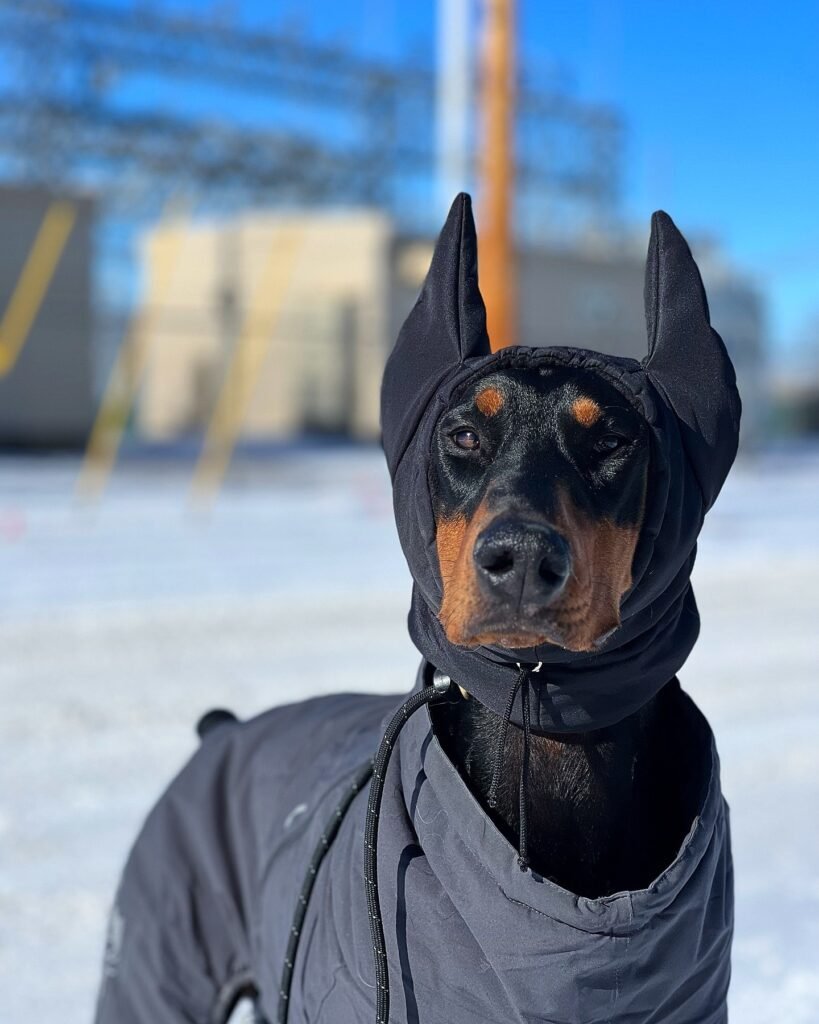
Named after Karl Friedrich Louis Dobermann, who developed them in the late 19th century, this breed was intentionally crafted as a protector. Their slick physique and sharp intellect made them ideal companions for those who needed personal security.
Dobermans typically form tight bonds with their human families, showing unwavering loyalty. They can, however, be wary of strangers, which underscores the importance of ongoing socialization.
Without proper training and consistent social interaction, a Doberman Pinscher might respond aggressively to perceived threats. Their athletic build and instincts for protection make it imperative for owners to guide and manage them effectively.
Beginning training and socialization as early as possible sets a healthy foundation. Positive reinforcement methods, coupled with structured exercises that challenge their agility and brains, keep Dobermans mentally stimulated. With informed leadership, they can serve as both loving companions and effective guardians.
8. Alaskan Malamutes – Strong and Independent
Closely resembling the Siberian Husky but larger, the Alaskan Malamute is another powerful working breed that can be dangerous when improperly managed.
Originally developed for pulling heavy sleds across great distances in Arctic conditions, the Alaskan Malamute needed to be physically tough and mentally resilient. These traits remain evident in modern Malamutes.
Malamutes are known for independence and a robust sense of self. They can be stubborn and may challenge owners if they sense a lack of leadership. While this trait can be endearing in moderation, it can become a liability if the dog refuses to follow commands.
When energy outlets are lacking, Malamutes might vent their frustration by becoming aggressive, territorial, or destructive. Their considerable psi bite force heightens the risk for serious incidents.
Hands-on socialization with humans and other dogs—beginning at a young age—lays the groundwork for positive interactions. Integrating vigorous exercise routines, such as hiking or pulling activities suited to their capabilities, can help keep Malamutes physically and mentally content.
9. Chow Chows – Confident and Protective
Chow Chows are instantly recognizable by their regal, lion-like mane and trademark blue-black tongue. Yet, behind their unique appearance is a breed known for its independent and sometimes aloof nature.
Hailing from ancient China, Chow Chows served in roles like hunting, guarding, and occasionally herding. Their versatile history contributed to a temperament that is both self-reliant and deeply loyal.
Often wary of strangers, Chow Chows can be protective or territorial, seeing anything unfamiliar as a potential threat. If they perceive an encroachment on their personal space without proper introductions, aggression may arise. They also tend to be less outwardly affectionate than other breeds, which can be misinterpreted as standoffishness.
Inconsistent training or neglect can lead to an aggressive dog, especially with strangers or other animals. Owners must be patient and firm, establishing leadership early. Gradual socialization—exposing them to various sounds, people, and places—helps them adapt.
Chow Chows thrive with a consistent routine and a respectful approach. It’s important to accommodate their somewhat reserved personalities without encouraging overprotectiveness. With a balanced method that combines clear guidelines and gentle handling, a Chow Chow can be a loyal, well-behaved family member.
10. Akita – Large and Powerful
Originating in Japan, the Akita embodies strength, dignity, and a confident spirit. While their imposing stature and protective instincts can make them exceptional guard dogs, these same traits also place them among breeds requiring careful oversight.
Historically, Akitas were valued for hunting large game such as boar and bear, as well as for guarding homes. This background contributes to their strong prey drive and protective tendencies.
Akitas often form profound bonds with their families while remaining detached or suspicious around strangers. They are typically bold and may not hesitate to confront perceived threats, a behavior that can escalate if not channeled properly.
Without thorough socialization or properly trained behaviors, Akitas might react aggressively when provoked. Given their formidable size and strength, any display of aggression can be serious, underscoring the need for responsible management.
Starting comprehensive socialization in puppyhood is paramount. Introduce them to varied experiences, people, and settings in a controlled way. Additionally, maintain consistent, fair training practices to establish clear boundaries. Educating oneself on Akita-specific traits is invaluable for anyone considering adopting this powerful breed.
Responsible Ownership – The Key to Preventing Aggression
Understanding the signals that a dog is distressed or on the verge of aggression is paramount. Warning signs include growling, baring teeth, stiff body posture, and intense staring. If you see any of these, step back, reassess, and remove triggers if possible. Early intervention can prevent dog bite incidents and fatal bites in extreme cases.
The Role of Proper Training
Proper training is a cornerstone of preventing dog attacks and fatal bites. Structured obedience work, combined with routine reinforcement at home, keeps your dog mentally sharp and receptive to your cues. With pit bulls, american bulldog, or any aggressive dog breed, you must establish leadership while avoiding harsh punishment. Positive reinforcement encourages your pet to behave appropriately without fear or undue stress.
Early Socialization with Other Animals and People
When it comes to potentially dangerous dog breeds, exposing your puppy to many different people, environments, and other animals in a non-threatening way helps normalize those experiences. An unsocialized dog, regardless of breed, is more likely to be suspicious or fearful, which can lead to aggression. Provide your dog with structured encounters where it learns how to share space with other dogs and people responsibly.
Ongoing Mental and Physical Stimulation
Breeds like the german shepherd, doberman pinscher, and siberian husky require not only physical outlets but also mental stimulation. Puzzle toys, obedience drills, agility training, and daily walks are just a few examples. A tired dog is generally calmer and less likely to engage in destructive or aggressive behavior.
Understanding Legislation and Community Responsibilities
In many areas, local ordinances or breed specific legislation regulate ownership of dangerous dogs like pit bulls and other dangerous dog breeds. Owners might face requirements such as mandatory liability insurance, special enclosures, or muzzle rules. While these laws remain controversial, they underscore the importance of safe management of powerful breeds. Whenever possible, work within the law to show that your dog is no threat to the community.
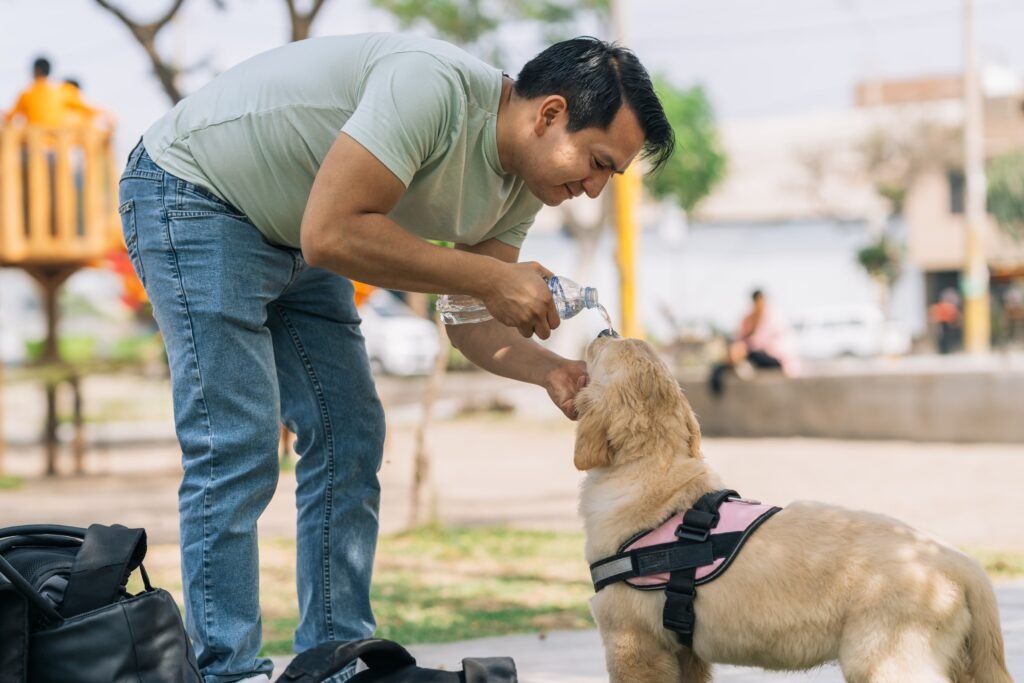
The Importance of Setting Boundaries and Routine
A daily routine that includes regular feeding times, exercise schedules, and training sessions helps keep dogs balanced. When dealing with a dog breed known for a powerful psi bite force, establishing clear boundaries from day one reduces confusion. Let your dog know what is and isn’t acceptable behavior. Ensure you follow through with consistent guidance, so your pet understands consequences and expectations.
Avoiding Common Ownership Mistakes
Many inexperienced owners choose a large, powerful dog breed for the wrong reasons, such as status or intimidation. This often results in insufficient training and socialization, which can turn the situation dangerous. Before bringing any high risk dog breed home, do plenty of research, speak to breeders and rescue groups, and consider your ability to maintain a structured environment.
When Professional Help Is Needed
If your dog starts developing worrisome behaviors, consult a professional trainer or animal behaviorist. Aggression rarely vanishes on its own. Prompt, qualified help can prevent a situation from escalating to serious dog bites or worse. The goal is to correct the root cause of aggression through proven techniques rather than waiting for a crisis.

Final Thoughts on Managing Potentially Dangerous Dogs
While many people fixate on most dangerous dog breeds, experts note that each dog breed is influenced by its environment, upbringing, and the dedication of pet owners. Yes, some dangerous dog breeds have been involved in fatal dog attacks, but countless dogs from these breeds spend their entire lives as loyal, gentle companions. It all comes down to the actions of the human caretakers.
Over the years, dog bite statistics have shown that a variety of breeds, including labrador retrievers and mixed breeds, can cause injuries if not managed responsibly. Irrespective of breed, owners must remain mindful of aggressive dog tendencies and commit to training and socialization to avoid tragedy. Careful ownership is key to preventing dog bite injury cases.
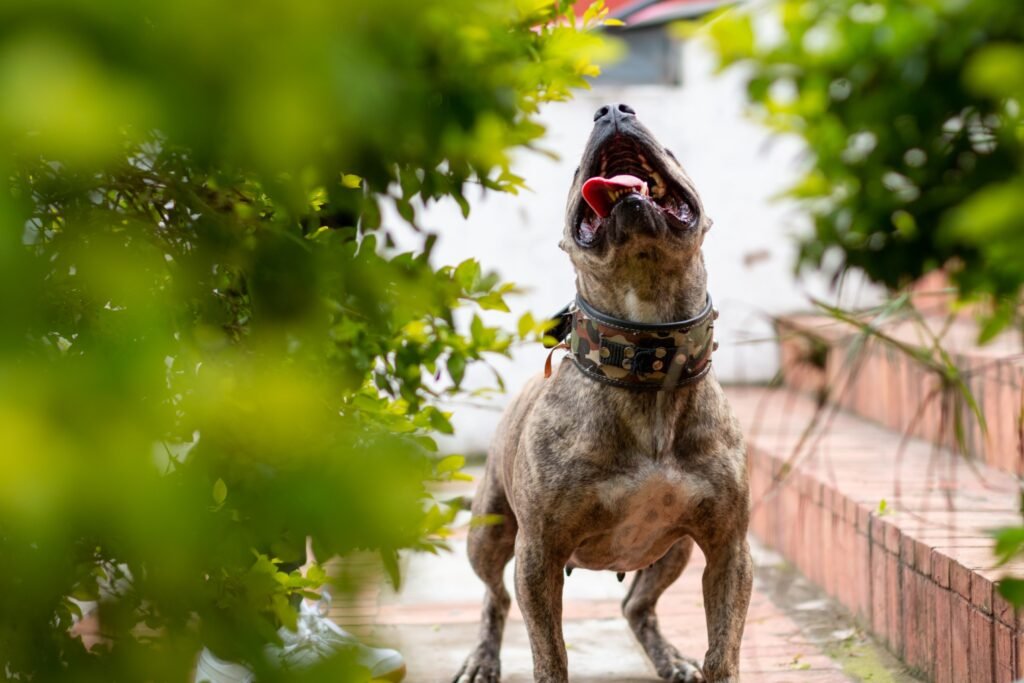
By providing structure, boundaries, and properly trained direction, owners can control their dogs’ instincts and channel them productively. Even if you own a strong, protective dog breed like the american bulldog or a well-known aggressive dog such as pit bulls, commitment to diligent training can transform your pet into a stable, confident companion. This approach is necessary to keep the dog population safe and to protect the breed’s overall reputation.
If you’re one of the prospective owners who is thinking about adopting a pit bull terriers, a doberman pinscher, or an other dog breed known for its protective nature, ensure you are fully prepared. Research, find reputable breeders or shelters, and be honest about whether your lifestyle supports a powerful breed. Also, keep in mind that adopting from rescue organizations often saves a life and can connect you with a dog that may already have some foundational training.
In many situations, if a dog’s caretaker invests in providing proper training, secure living arrangements, and an attentive environment starting at a young age, issues are far less likely to develop. A stable routine, along with respect for the animal’s temperament, goes a long way in keeping dogs dangerous incidents at bay.
Featured image by @bestamericanpitbulls
